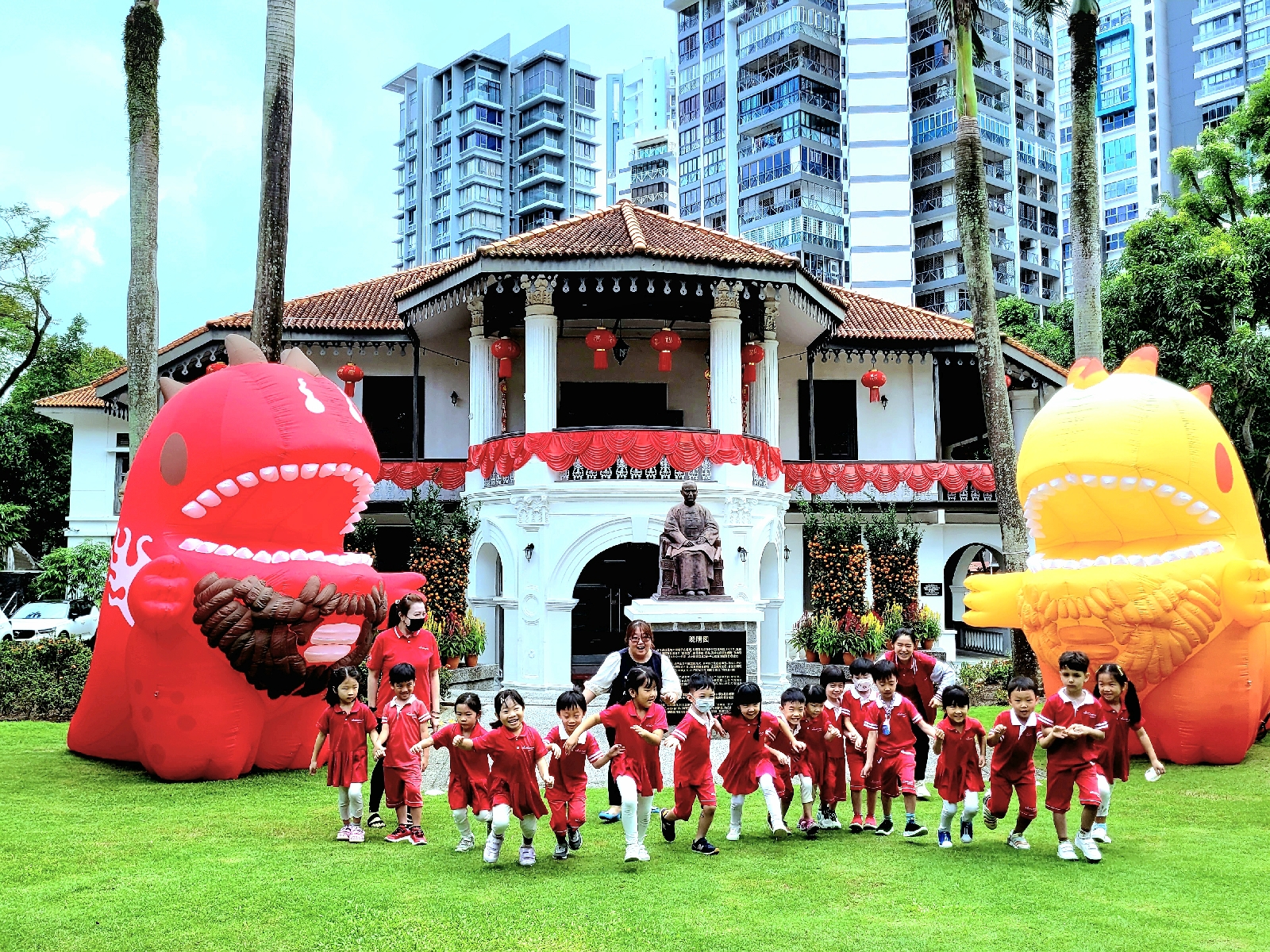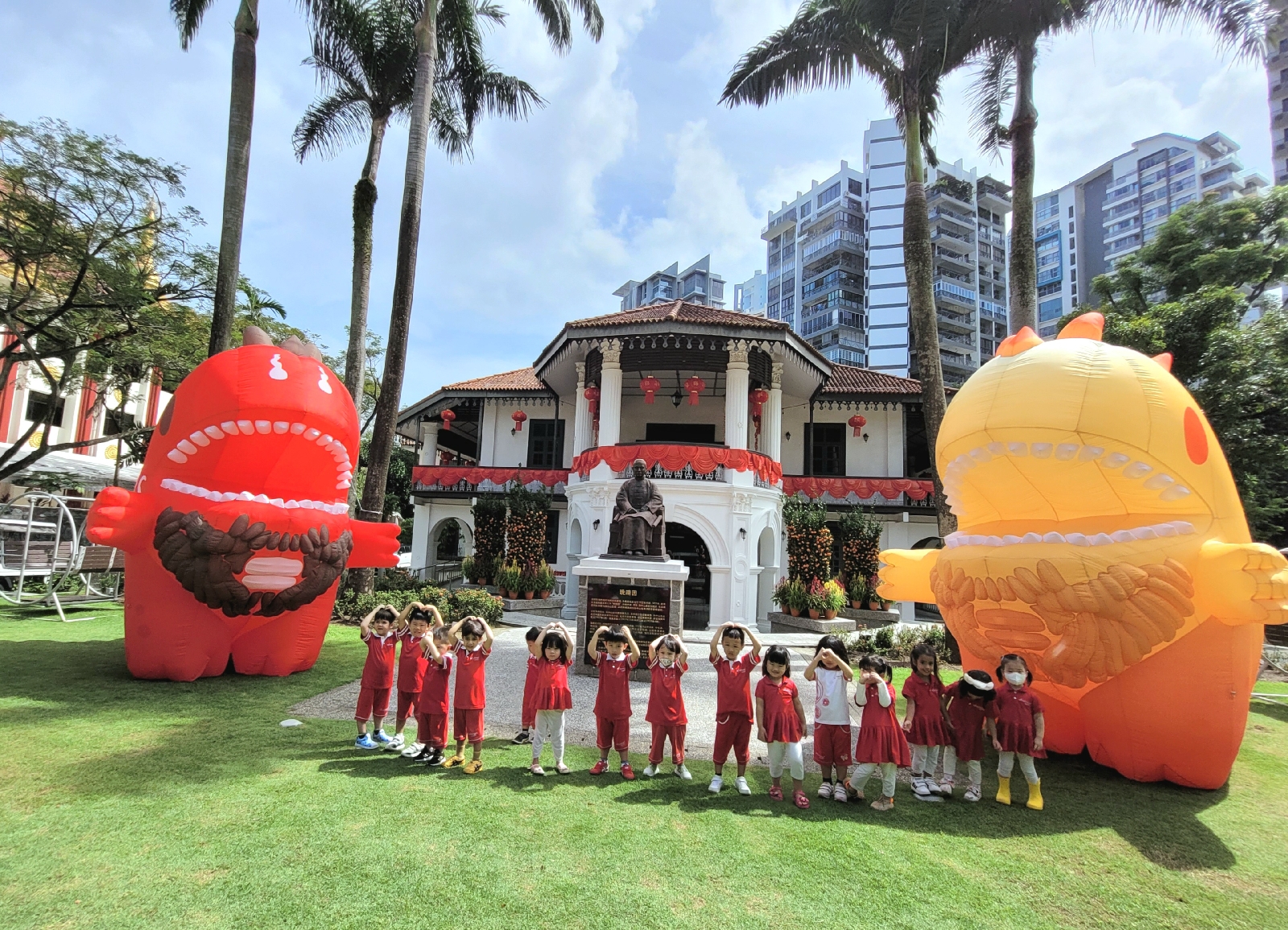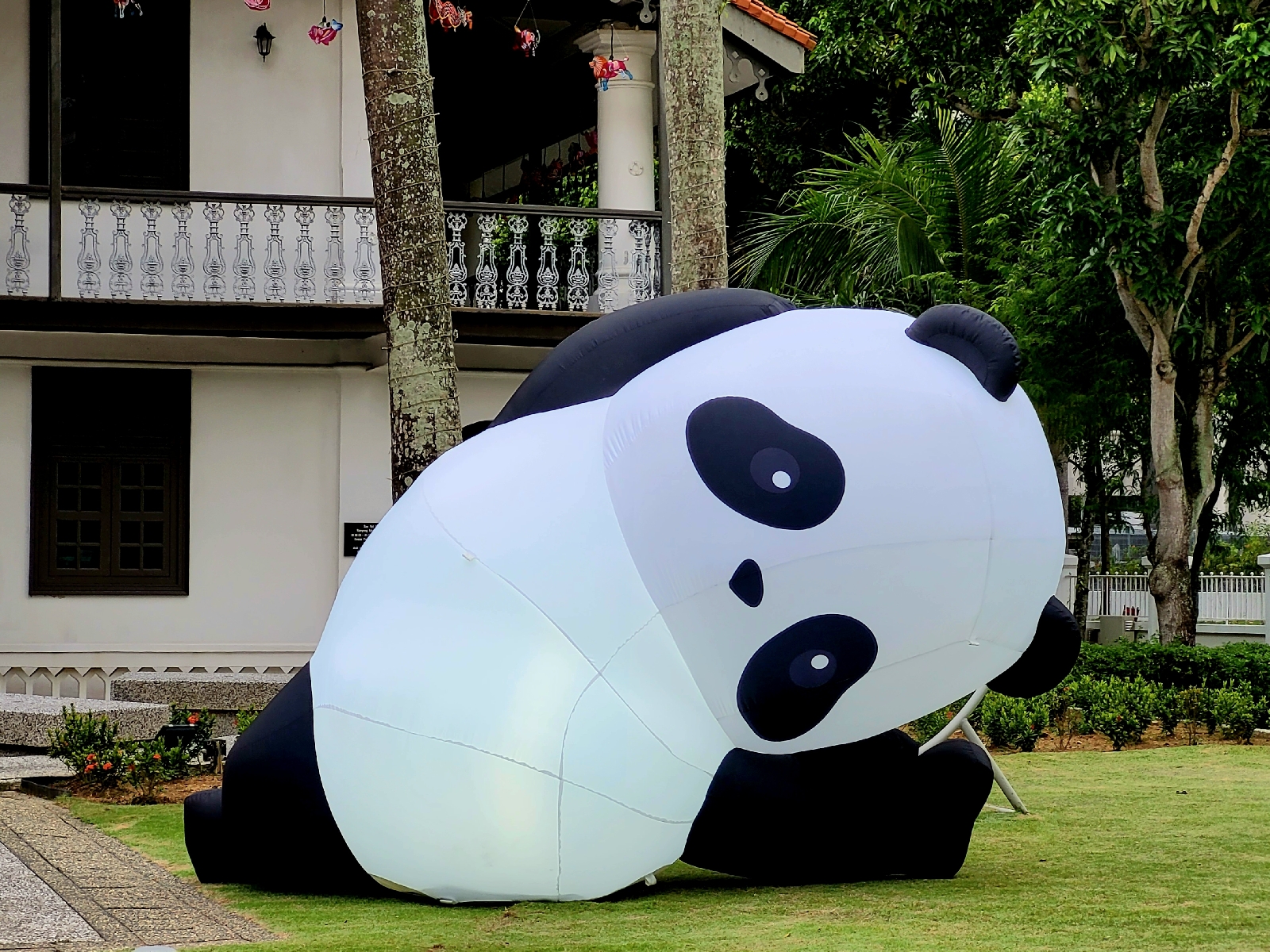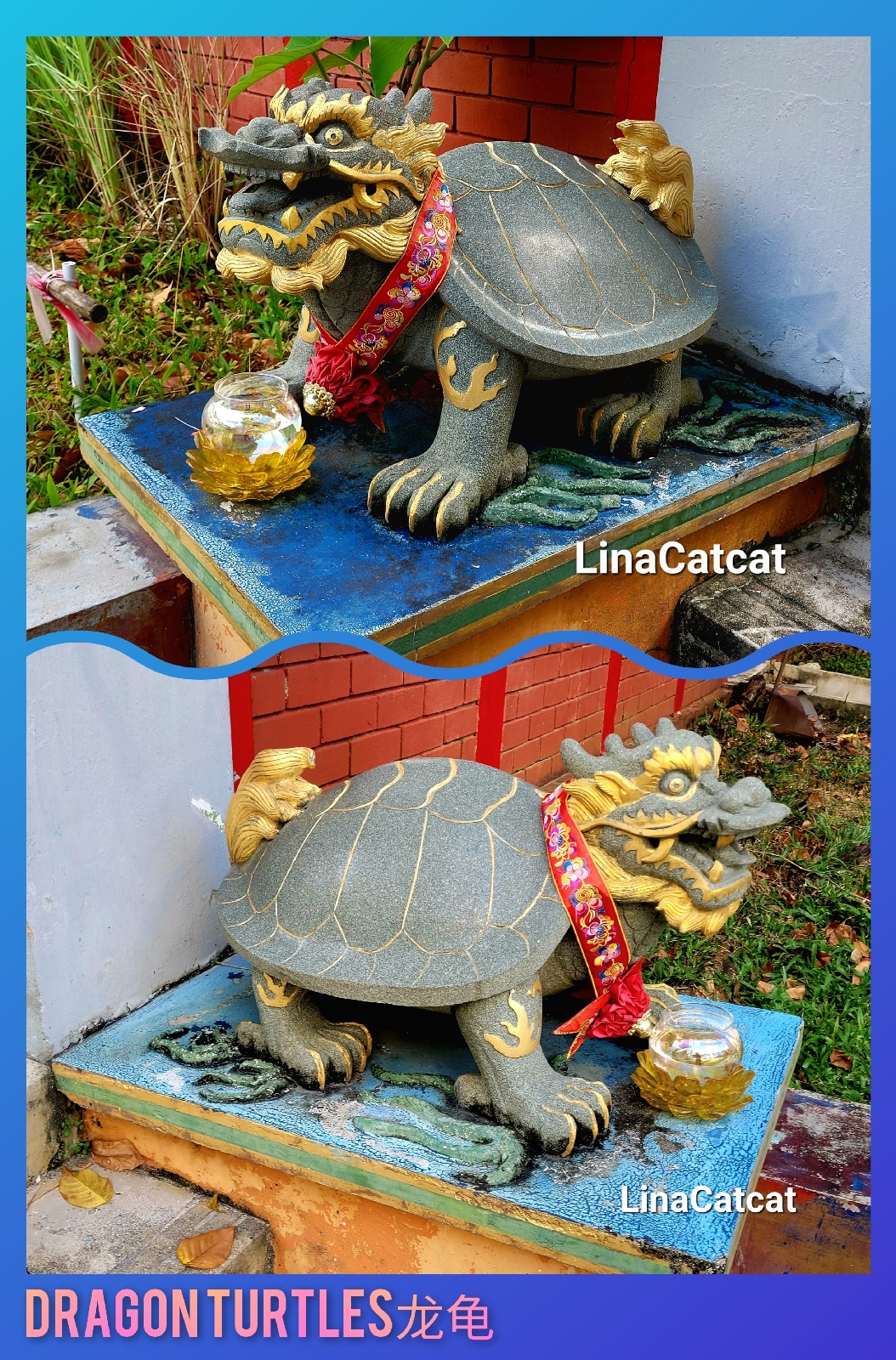This Lunar New Year is a time of family reunion and festive cheer celebrated by Chinese and other Asian communities. Other than celebrating with family and friends, many Chinese also make it a point to visit temples during CNY (Chinese New Year), arguably the most important traditional festival and holiday for the Chinese.
Let take a quick peek thru two temples that I attended a preview on the 5th January 2023 in the morning.
Poh Chung Tian Chor Sian Tong (普忠殿助善堂) and its rich history.
A quaint temple is nestled and dwarfed by public housing estates that no one noticed where it comes from in the first place! Not far from the main busy road that hardly seen by the public.
A 'quaint' Poh Chung Tian Chor Sian Tong Temple (incorporated in 2008
) It is located at 201 Toa Payoh Lor 6 and has something extraordinary history and its roots to be retold.
The temple has a long history of over 100 years old which originated from Nankin Street, a place was once a coolie-keng on those days if I could recall.
The temple is also called Poh Tiong Beo (Pu Zhong Miao) 普忠庙 by old folks who were once lived in that area.
A plaque on the temple stairs in front, indicated in year 2005 was built.
A 'strange' looking guardian tortoise with a dragon head, is a Dragon Turtle (龙龟, Lóngguī). It is a legendary Chinese creature that combines two of the four celestial animals of Chinese mythology: the body of a turtle with a dragon is promoted as a positive ornament in Feng Shui, symbolizing courage, determination, fertility, longevity, power, success, and support.
Door Gods or Gate Deities refers to Mén Shén 門神 are divine guardians of doors and gates in Chinese folks in religions, used to protect against evil influence or to encourage the positive ones. They began as the divine pair - Shenshu 神荼 and Yulū 鬱壘 under the Han Dynasty, but the defined generals - Qin Shubao 秦叔寶 and Yuchi Gong 尉遲恭 have been more popular since the Tang Dynasty.
They should have face each other and not placed them back to back, considered it to be bad luck.
The main deity of the Poh Chung Tian Chor Sian Tong Temple is Dai Song Sam Tiong Ong 大宋三忠王 (San Zhong Wang), thus referring to the three faithful officials Wen Tian Xiang, Lu Xiu Fu and Zhang Shi Jie, who lived during Southern Song Dynasty.
Some of the photos taken during preview (5th Jan 2023) as below
A pair of carved stone horse statue facing the entrance of the temple is no ordinary ones!
A symbol of taoism is embedded on the ground between the two ancient horses, is called Tai Ji signifying the Supreme Ultimate. It represents the opposing energy forces, Yin (negative) and Yang (positive), darkness and light respectively, that complement and counterbalance each other to attain the true harmony and final unity, the TAO
Beautiful art of paintings were hanged on the wall of the Archway outside the temple.
Toa Payoh Seu Teck Sean Tong (大芭窑修德善堂)
One of the many temples build in Thailand, Malaysia and Singapore to commemorate Song Da Feng 宋大峰 (b. 1039) during Song Dynasty of China.
The Toa Payoh Seu Teck Sean Tong Temple had its humble beginnings in an attap-roofed hut in the then Boon Teck road (Hup Choon Hng). Established in 1942, the temple is part of the shan tang (charitable and religious institutions prominent in Southern China in the 17th century) network.
As part of shan tang (善堂) tradition, an altar dedicated to Reverend Song Dafeng (宋大峰) was blessed in Singapore’s first shan tang, the Seu Teck Sean Tong Yian Sin Sia (founded in 1916), before being installed in presently Toa Payoh temple.
After the Japanese Occupation, a purpose-built temple on the site of its current location was completed in 1959. Besides its religious function, the Seu Teck Sean Tong Temple also carries out activities in accordance with the shan tang mission.
Brief history of Shantang (善堂) and Song Dafeng (宋大峰)
Teochew Shantang (善堂) is a type of charitable organization with a religious component. The first shantang was built in Heping, Chaoyang (广东潮阳和平), in honour of Buddhist monk Song Dafeng (宋大峰), which is also the town that he was buried. Song Dafeng was born in AD1039 in Wenzhou, Zhejiang (浙江温州), and was appointed as magistrate of Shaoxing, Zhejiang after passing his imperial examinations. But he was disappointed with the corruption and inefficiency of the system and so he quit his job to do charitable works, mostly in Fujian and Chaoshan. After spending several years in Fujian he moved on to He Ping Village in Chaoyang, Guangdong, where he continued his good works, and his most significant project was to build He Ping Bridge (和平桥 Bridge of Peace) for the ease of travelling across the river and served as an alternative to boats.
Ancentral Tablets Hall
Ancestral Tablets - The “Xiu De Tang” (修德堂) Ancestral Hall is located in the second section of the Temple, directly behind the Main Prayer Hall. It is a two storey building housing ancestral tablets in multi-tier sections.
My late grandparents and their family, their urns that are placed in the niches, still keep in this hall about 3 or 4 decades ago till present except my late grandma's grave (buried in 1999 at CCK cemetary) was exhumed a few years ago and moved in and her niche was reserved a long time ago.
The “Gui De Lou” 歸 德 樓 Columbarium Hall is located at the third section of the Temple, directly behind the Ancestral Hall. It is a five-storey building. This building offers members of the Temple the facility to house the ashes in honour of their forebears and relatives. It is a traditional way for the living to perpetuate the memory of their beloved ancestors and relatives.
Pictures Of 24 Filial Piety Stories at the top level is seen as above picture.
Seu Teck Sean Tong was a Chinese clan charitable institution that provided free Traditional Chinese Medical services to the public irrespective of religion and creed at no charge, thus benefited to many and the name of the 'Sean Tong' became well known to the people . The organisation established multiple branches over the years.
In 1967, Seu Teck Sean Tong opened its medical department offering free medical services to the public.
Blue Cross Charitable logo Currently, the temple also houses a kidney dialysis unit. Toa Payoh Seu Teck Sean Tong was one of the Blue Cross Charitable Institutions, to help the war victims in the past.
Some photos taken during preview on 5th Jan 23 as below:
Entrance to the Main Prayer Hall
The Reverend 'Song Dafeng' occupies the central position on the altar in the main prayer hall. It is understood that Song Da-Feng’s birthday falls on the 29th day of the tenth lunar month and a one day prayer ceremony to celebrate the occasion will be held in this temple’s premises.
The bluestone slab reliefs and inscriptions on the stone walls on both sides of the archway, telling the story of Song Dafeng's birth. Family deeds and the spirit of helping those in need.
TCM Clinic established in 1967, provided by the Shan Tang the internal medicine and acupuncture services are completely free.
Memorial Hall and TCM building
Other photos as below
Huge Majestic Candle holder
Join us as we explore local temples during the CNY period to have a peek at how they and their devotees celebrate the New Year. We will have the opportunity to hear from temple reps who will enlighten us on customs associates with specific temples and dialect groups.
For each tour and date, members of the public can choose to visit to two different temples that they wish to visit.
Kindly arrive at the meeting point (Sun Yat Sen Nanyang Memorial Hall) 15 minutes before the programme commences for registration.
Walk-ins will not be accepted.
Each ticket admits one participant only.
Transport will be provided from the meeting point to the temples. Please note that there will be no transportation back to the starting point after the tour ends.


















































